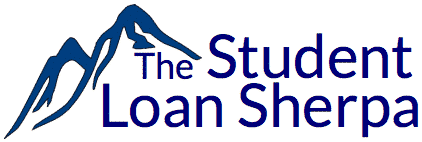Avalanche and Snowball are two of the most popular student loan repayment methods. While these wintery sounding names might sound like a gimmick, do not be fooled.
Avalanche and snowball are both powerful ways to eliminate debt.
What are the avalanche and snowball methods of student loan repayment?
There are three ways borrowers typically repay their student debt:
- The Bad Way – Pay just the minimum on all student loans. This approach maximizes interest, lender profits, and borrower spending. It ensures student debt will linger for years.
- A Better Way – Pay a little bit extra on all student loans. This approach will get the loans paid off faster, but it is not the most efficient use of funds. Paying a bit extra on all loans is a common mistake made by responsible borrowers.
- The Best Way – Pay the minimum on all loans except one. Pay down the one loan as quickly as possible. When that first loan is paid off, move on to the next loan.
This is the spot where Avalanche and Snowball enter the discussion. Avalanche and Snowball are strategies for identifying which loan gets paid off first.
The Avalance Method – Borrowers pay off the loan with the highest interest rate first. The goal behind the Avalance Method is to minimize spending on interest.
The Snowball Method – Borrowers pay off the loan with the smallest balance first. The goal behind the Snowball Method is to score some easy wins and build on that success.
Dave Ramsey and the Argument for Snowball
The Snowball Method is all about psychology.
By picking the debt with the smallest balance, you choose the easiest target and look for quick success.
People like Dave Ramsey advocate this approach because it motivates people. When you stop receiving a bill and see a loan fall off your credit report, it can be very encouraging.
This approach places the emphasis on sticking with your plan. No matter what student loan repayment strategy you select, the key to success is consistency. If you free up all the cash you can and keep a tight budget for two months, it will help. If you do it for several years, it will really make a difference. Going the snowball route helps keep people going for the long haul.
Avalanche Math
The Avalanche Method comes down to basic math.
All loans generate interest. The loans with the highest interest rates generate the most interest. Eliminating the high-interest rate loan first means less spending in the long run.
From a pure accounting perspective, the Avalance Method is better than the snowball.
The decision for borrowers comes down to one simple question: Am I going to stick with my plan to attack my debt?
If motivation is going to be an issue, go snowball. If you are ready to wage a long war against student debt, go avalanche.
None of the Above?
Snowball and Avalanche are popular strategies in part because they are easy to explain.
However, there are other viable approaches.
When I pick the next student loan to attack, I consider many different factors:
- Is the loan federal or private?
- Is there a cosigner on the loan?
- How does this strategy impact financial goals like retirement or buying a house?
- Is student loan forgiveness a possibility on the loan?
The best strategy will be the one that you can stick to and one that addresses your individual needs and financial goals.
Avalanche and snowball are great tools to eliminate student loans, but they are many different options to consider.




